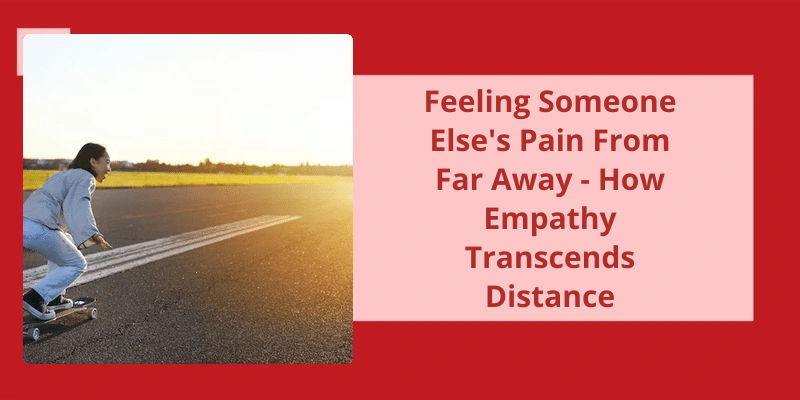The human face is a wonderful canvas of emotions and expressions, conveying an array of subtle cues and signals that give away our innermost feelings. Whether it's a broad grin or a twinkle in the eyes, every little twitch and movement can reveal something about our mood and mental state. Photographs capture these fleeting moments in time, allowing us to freeze a particular expression or gesture and analyze it in detail. But can we really tell if someone is happy just by looking at a picture? While the answer may seem obvious to some, there’s actually an entire field of study dedicated to understanding the nuances of facial expressions and body language. In this article, we'll explore how experts use science and technology to decipher the hidden messages behind a single snapshot, and what these clues can tell us about the person in the picture.
Why Do Pictures Make People Happy?
Have you ever looked at a picture and felt a sudden burst of joy and nostalgia? It’s not just you – research has shown that looking at pictures can actually make people happier. One reason is that photos help us remember the past. By triggering memories of happy times and experiences, photos remind us of the good things in our lives and can bring back feelings of contentment and satisfaction.
In addition, viewing photos can be a form of self-expression and creativity. Whether we’re taking our own pictures or admiring the work of others, photography can help us explore our feelings, preferences, and aesthetic sensibilities. It can also inspire us to reflect on our own experiences and perspectives, leading to greater self-awareness and personal growth.
So next time youre feeling down, take a moment to look at some pictures and see if it doesn’t put a smile on your face.
However, not everyone feels comfortable smiling in every photo. Some people are self-conscious about their teeth, while others simply prefer a more serious or mysterious expression. So, is it really necessary to smile in a photo? Let’s explore the reasons why smiling is important in photos, as well as some situations where it might be okay to skip the grin.
Is It Necessary to Smile in a Photo?
However, the question remains: is it necessary to smile in a photo? The answer isn’t straightforward and largely depends on the context. If you’re taking a professional headshot or a passport photo, usually a neutral expression is preferred. A forced or fake smile can come across as insincere or unprofessional. In fact, some industries, such as law or finance, may even require a serious or stern expression.
Not only does it convey happiness and positivity, but it also helps to capture the moment and bring the group closer together. A genuine smile can even help to alleviate nervousness or tension that may arise when taking a photo.
In a social or dating setting, a smile can make you appear more friendly, approachable, and attractive. In fact, studies have shown that people are more likely to be drawn to a photo of someone smiling than someone who’s not.
Some people may have dental issues or have been taught to conceal their teeth when smiling. In these cases, a closed-mouth smile or a natural expression may be preferred. What’s most important is that you feel comfortable and confident in the photo, as this will come across in the final result.
Ultimately, the decision to smile or not should be based on personal comfort and confidence, as this will come across in the final result.
The Science Behind a Genuine Smile and It’s Impact on Mood
- Smiling triggers the release of endorphins, dopamine, and serotonin, which are feel-good chemicals in the brain.
- A genuine smile involves the muscle around the eyes, called the orbicularis oculi. This muscle isn’t easy to control voluntarily, and it’s activation is a sign of a sincere smile.
- Studies have shown that when people see a smiling face, they tend to perceive that person as more attractive, likable, and trustworthy than someone with a neutral or frowning expression.
- A genuine smile can lower stress, decrease heart rate and blood pressure, and improve mood and overall well-being.
- Interestingly, even forcing a smile or plastering on a fake one can still have some positive effects on mood, although not as powerful as a genuine smile.
Source: Why is everybody asked to smile when someone makes a …
As we delve into the practice of smiling for pictures, it becomes evident that this seemingly natural response is a learned behavior that emerged relatively recently in human history. Moreover, it’s a phenomenon that owes it’s popularity to the camera industry and the cultural shift towards cheerfulness in America. But what prompted such a drastic change in our collective behavior, and why do we continue to do it today? Let’s investigate further.
Why Do Humans Smile for Pictures?
Smiling for pictures has become a cultural norm in many parts of the world. Whether it’s in a family album or on social media, a smile is almost always the go-to facial expression for a photograph. Many theories suggest that humans do this as a way of conveying happiness or to look their best in a photograph. But smiling for the camera is far from a natural response – it’s a learned behavior that’s it’s roots in the history of photography.
In the early days of photography, people rarely smiled in photographs. The process was so time-consuming and uncomfortable that people would often look solemn or even frightened. However, as photography became more accessible and affordable, people began to see it as an opportunity to capture happy occasions such as weddings or family gatherings. Photographs were no longer just a record of the event; they were also a way to convey joy and happiness.
The camera industry also contributed to the popularity of the photographic grin. Manufacturers began developing lenses and cameras specifically designed to capture sharp, clear images of peoples faces, making it easier for people to pose and smile for the camera. The evolution of camera technology and the increasing affordability of cameras helped establish photography as a popular pastime among people of all ages and social classes.
How Has Smiling in Pictures Evolved Over Time and Across Different Cultures?
This topic explores the changes in the way people smile in photographs and how it varies across different cultures throughout history.
While words can convey complex ideas and evoke powerful emotions, research suggests that pictures may have a more direct impact on our emotional responses. In fact, studies have shown that emotionally charged images can activate a more primitive, reactive part of the brain that responds rapidly and automatically to stimuli. This may explain why images have the ability to elicit strong emotional reactions even when we don’t fully understand why we’re reacting that way.
How Do Pictures Affect Emotions?
The relationship between pictures and emotions is a complex and fascinating one. Studies have shown that pictures can have a profound impact on our moods and feelings, sometimes even more so than words. This is because pictures can convey powerful messages and emotions much more easily and directly than language can.
When we look at a picture, our brains process the image almost instantly, and we respond emotionally without even realizing it. This is because the visual system in our brains is wired to respond very quickly and automatically to certain types of images, such as those that are threatening or joyful. These emotions can then spread throughout our bodies, affecting everything from our heart rate to our breathing.
For example, a beautiful landscape photograph may make us feel relaxed and content, while a picture of a car crash or natural disaster may trigger feelings of fear or sadness. This is because images can tap into deep-seated emotional responses that we’ve developed over time in response to certain situations or stimuli.
For example, a photograph of a loved one can evoke powerful emotions because it reminds us of shared experiences and memories. Similarly, pictures can also be used therapeutically to help people process difficult emotions or traumatic experiences.
Conclusion
Thus, when these muscles contract, they pull up the cheeks and create the characteristic crow's feet at the corners of the eyes – a sign of a genuine smile that reflects a person's true happiness in a picture. However, detecting happiness in a picture isn’t simply a matter of recognizing these physical cues. It also requires an understanding of the individual's context and experience, as well as their cultural and social background, which can affect how they express their emotions. Ultimately, determining whether someone is happy in a picture requires a combination of scientific knowledge, contextual awareness, and human intuition – qualities that make us uniquely capable of understanding and connecting with one another.






